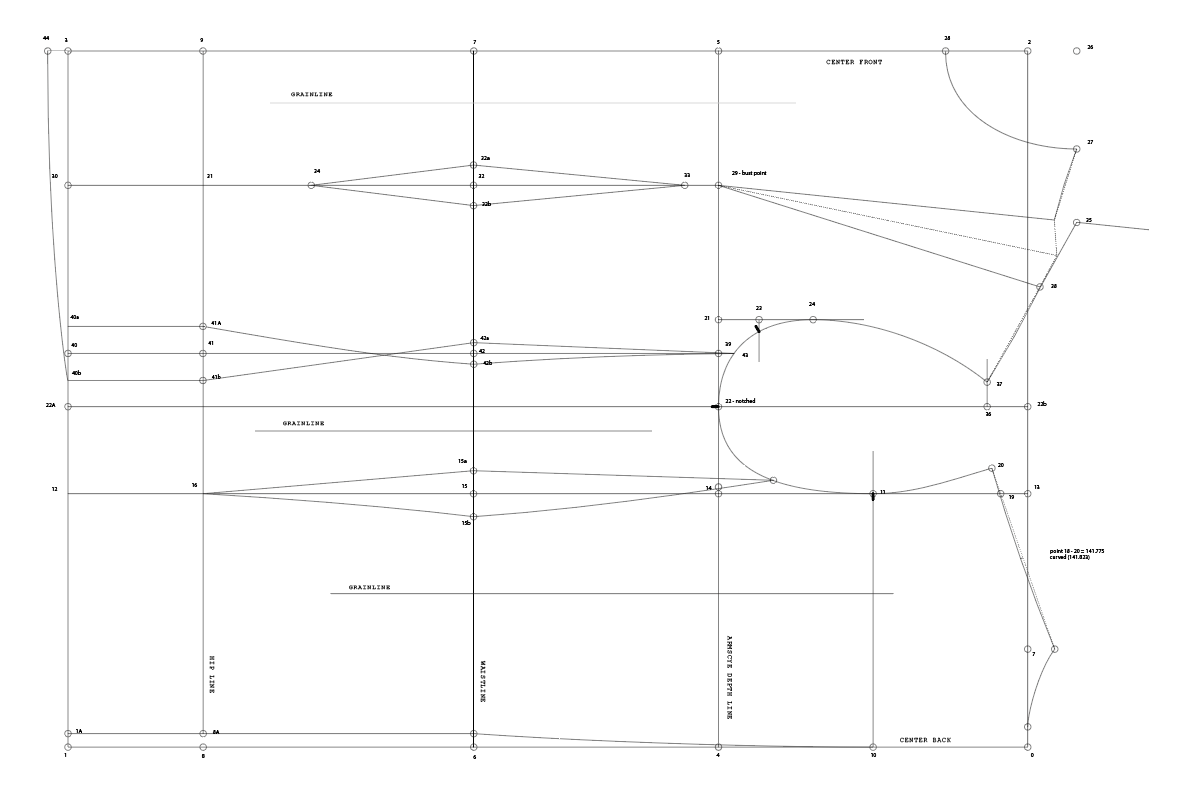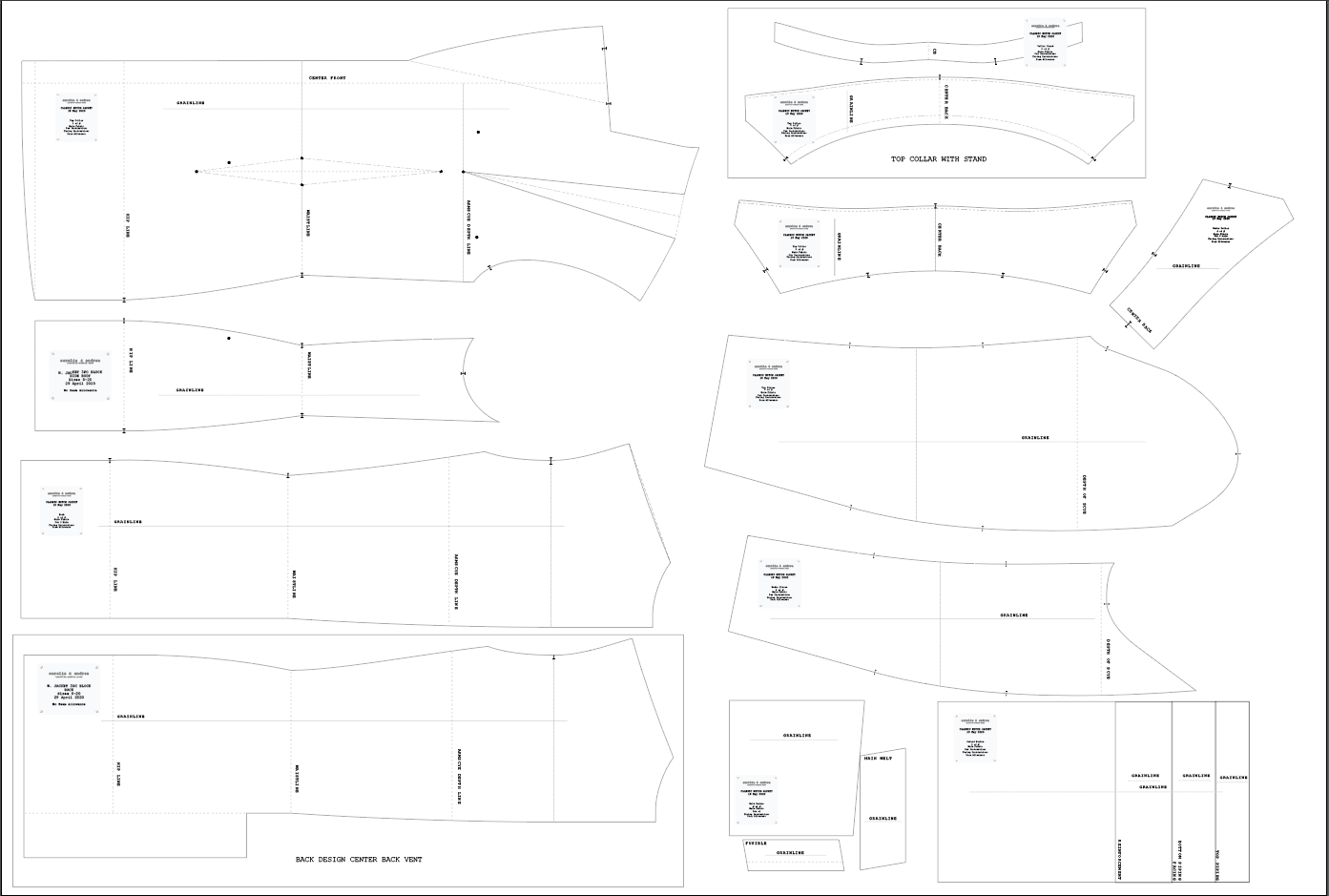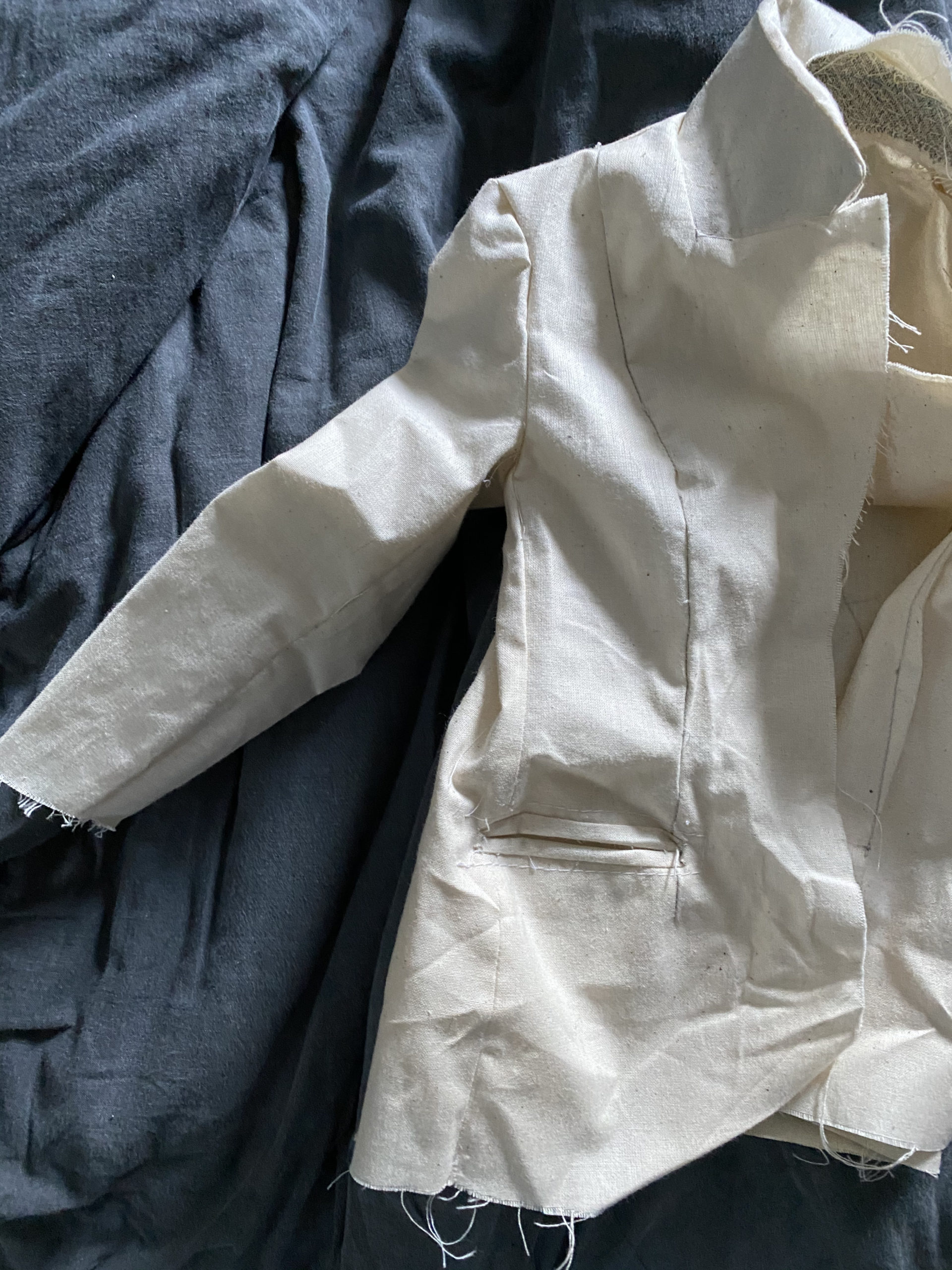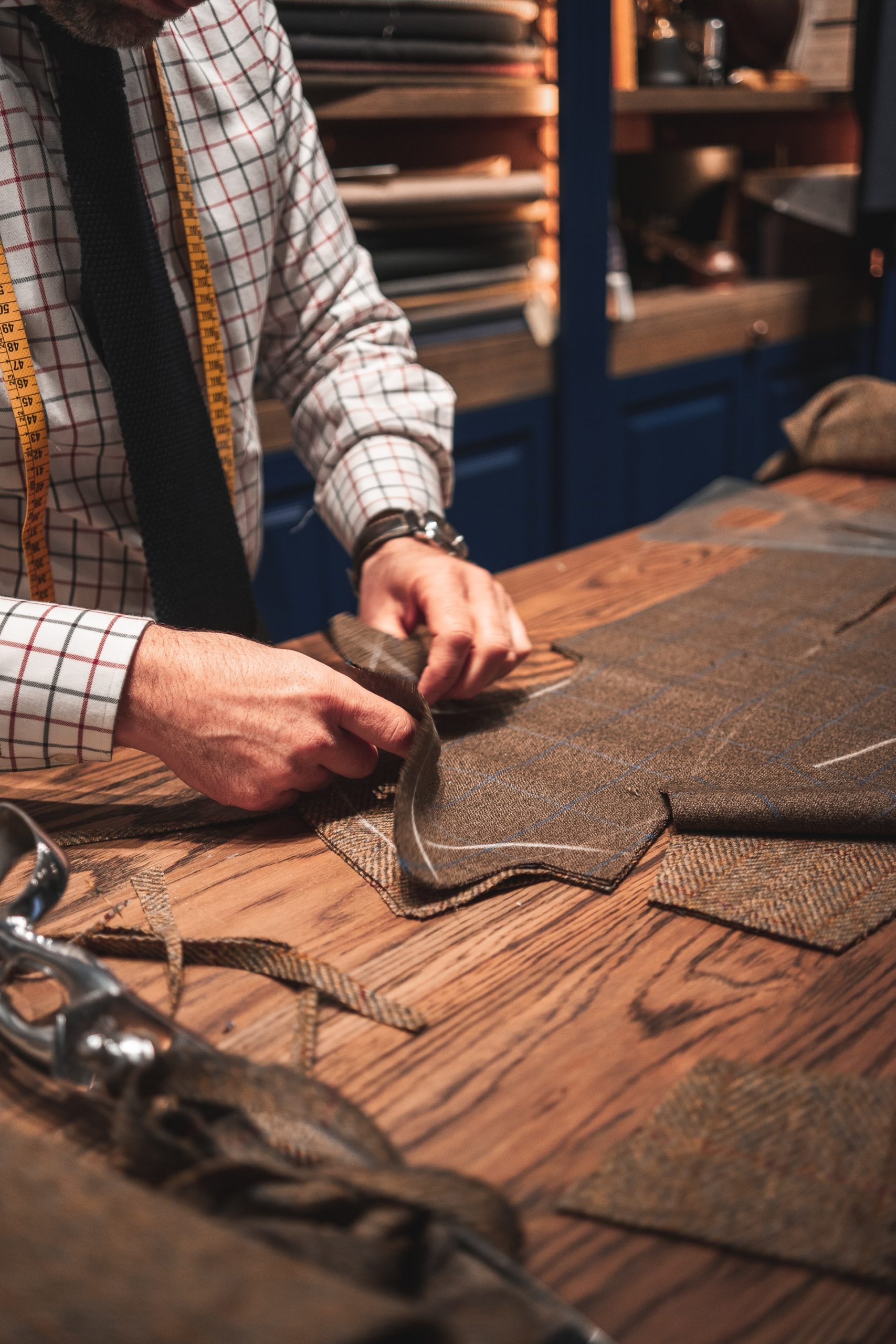Looking back, I never expected I’d be where I finished this project. While pattern making in Adobe Illustrator was one of the things I wanted to learn in this class, I didn’t think it will be the forefront of my project. If only I knew the multiple things I can achieve with the program, I would have ...
This is the preview of the patterns in a model in Adobe Illustrator. It is saved as a .ai file and cardboard is extendable. This is where pieces can be copied for manipulations or fixed. Ideally, however, there is a separate cutting table (a larger cardboard separate from this file) so as no to ...
There were a few reasons I had to sample the patterns at home. One, the country was on Covid-19 lockdown restrictions and printing wasn’t on the top computer essential business. Second, there are e-patterns being sold online that would need to be printed on a regular A4 sized paper. This is ...
Here is two-part video of how I drafted the two-piece sleeve pattern often used in a classic tailor jacket. The experience was a pretty long one as it is my first time drafting the sleeve patten at all. I don’t think I’ve ever done it even on paper. This is the beauty of digital pattern ...
I decided to create a variation of the collar where the stand is separate. This allows the collar to be shaped around the neck giving the design a more tailored finish. Here’s a fast version of the process. Probably one of the easiest to make after experiencing it at the Winter class paper.
Probably one where I did most of the trial and error, remembering from past pattern making experiences of adding pockets but also making it as classic as possible. I found that I understand jet pocket more than the welt pocket.
Drafting the top collar pattern in Adobe Illustrator. Here I was able to use new tools to make the pieces unite together quicker and faster than making new lines and connecting them to where I added volume. It is perhaps the easiest edit I’ve made.
This is the preview of how I traced the under collar and the front patterns of a classic notched jacket drafted in Adobe Illustrator.
I say very brief because I focused much of my energy hunting down the extensive history of suits and tailoring. In the last week of the class was I fully able to research the history of pattern making, which was quite interesting. I didn’t actually think of how far along pattern making had ...
Here’s how the pieces were separated from the draft of the block. Again at a faster speed. I later fixed the curve of the hips after evaluating the Massey blocks available in Accumark.



